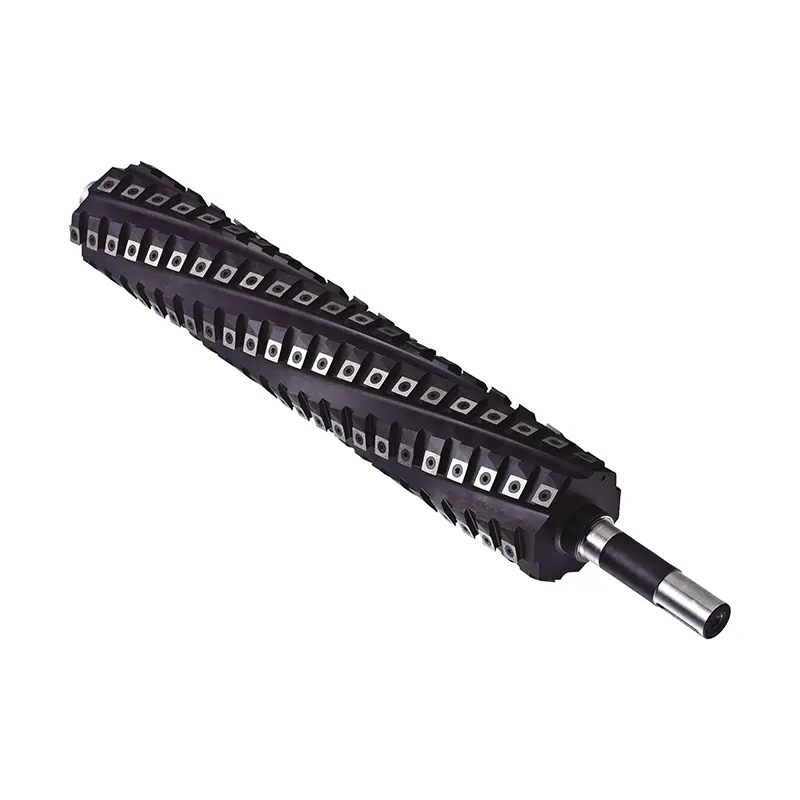When it comes to woodworking and milling, the choice of cutter head can significantly affect the quality of the finished product. Two popular options are helical cutter heads and helical cutter heads. Both are designed to cut and shape wood efficiently, but they have distinct differences that may affect their performance. In this article, we’ll explore the characteristics of each type of cutter head and discuss which one is better suited for specific woodworking tasks.
Spiral cutter head:
A spiral cutter head consists of a series of small square blades arranged in a spiral pattern along the cutter head. These blades are angled slightly to the axis of the cutter head, creating a shearing action when in contact with the wood. This design allows for smooth, quiet operation with reduced tearing and a finer finish on the wood surface.
One of the main advantages of spiral cutter heads is their ability to minimize tearing, which is especially useful when working with patterned or difficult-to-machine woods. The shearing action of the blade results in cleaner cuts, reducing the need for additional sanding or finishing. Additionally, the helical design spreads cutting forces over more of the insert, reducing stress on the machine and extending tool life.
Spiral cutter head:
Spiral cutter heads, on the other hand, feature a continuous spiral arrangement of cutting edges along the length of the cutter head. This design allows for a more aggressive cutting action, making it ideal for heavy-duty milling and planing tasks. The spiral structure of the cutting edge enables efficient chip evacuation, reducing the possibility of clogging and heat build-up during operation.
Spiral cutter heads are known for their ability to handle tough cutting conditions such as hardwoods and thick woods with ease. The continuous cutting edge provides a consistent and even finish, making it a popular choice for industrial woodworking applications where productivity and precision are critical.
Which one is better?
Now that we have looked at the characteristics of spiral cutter heads and helical cutter heads, the question remains: which one is better? The answer depends largely on the specific requirements of the woodworking task at hand.
For fine woodworking and finishing applications, a spiral cutter head is often preferred because of its superior surface finish and reduced tearing. Its ability to handle delicate wood species with superior results makes it a valuable asset in a cabinet shop or furniture making environment.
In contrast, helical cutter heads excel in heavy-duty machining and high-volume production environments. Its aggressive cutting action and efficient chip evacuation make it ideal for tasks requiring speed, power and precision, such as milling large panels or machining dense hardwoods.
In summary, both spiral cutter heads and helical cutter heads have unique advantages and are well suited for different woodworking scenarios. Ultimately, the choice between the two depends on the specific requirements of the job and the desired balance between surface finish, cutting speed and tool life.
In some cases, woodworkers may choose a combination cutter head, which integrates spiral and spiral cutting elements to provide a versatile solution for a variety of applications. By leveraging the strengths of each design, the combination head delivers superior results on a variety of woodworking tasks, delivering the best of both worlds.
In summary, the choice between helical and helical cutter bits should be based on a careful evaluation of your specific woodworking needs, taking into account factors such as material type, desired finish quality, throughput, and machine capabilities. By choosing the right bit for the job, woodworkers can achieve optimal results and improve the quality of their workmanship.
Post time: May-31-2024

